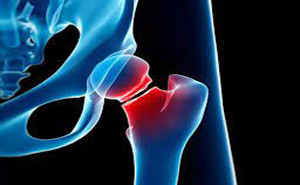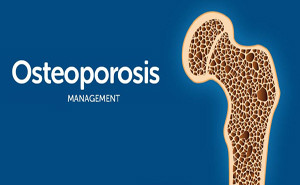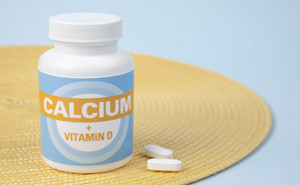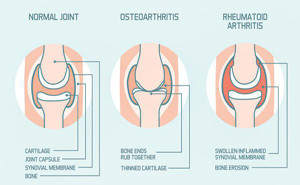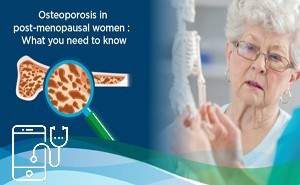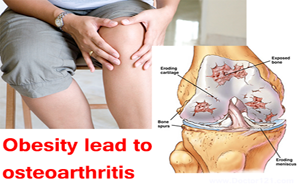Orthopedic-disorders
JAMA Network: A Systematic Review
and Meta-analysis
Osteoporosis is characterized by
reduced bone mass and fragmentation of bone architecture, resulting in an
increased risk of fracture. Approximately 1 in 2 women and 1 in 5 men aged 50
years or older will experience an osteoporotic fracture in their remaining lifetime.
Hip fracture is...
Osteoporosis is a bone disorder
that increases a person’s risk of fracture due to low bone mineral density
(BMD), impaired bone microarchitecture/mineralization, and/or decreased bone
strength. Osteoporotic fractures most commonly occur at the hip, spine and
wrist.
Fracture prevalence increases
dramatically with age. The majority of pos...
Overview of OsteoporosisOsteoporosis is a disease
characterized by low bone mass and deterioration of bone tissue and bone
structure, which can lead to increased bone fragility and risk of fracture. The most common fractures associated
with osteoporosis are in the hip, spine, wrist, and shoulder.
Osteoporosis is the major cause
o...
The role of CalciumCalcium is a
key structural component of bone and is built into bone as a mineral complex
that includes calcium and phosphate. Calcium is a major building-block of bone
– the skeleton houses 99% of the body’s calcium stores. The calcium
in bones also acts as a reservoir for maintaining calcium levels in the blood,
which is n...
Calcium and vitamin D supplements
needs for prevention of osteoporosis and osteoporotic fractures. There is
evidence of significant benefit in people at risk of deficiency.For individuals who cannot get
enough calcium through their diets, supplements may be beneficial. These should
be limited to 500-600 mg per day and it is generally recommende...
Vitamin D is
known for its role in calcium homeostasis for optimal skeletal health. It was
previously believed that only elderly or hospitalized patients were at risk for
vitamin D insufficiency, but many people in the general population have
insufficient levels of Vitamin D (25-hydroxyvitamin D or in short, 25[OH]D).We review the
role of vita...
Osteoarthritis is a disease resulting
from wear and tear on joints over time, whereas Rheumatoid arthritis is an
autoimmune disease where the body’s immune system attacks joint tissues. RemoveAvailable Brand
Genetic factors play a
significant role in determining whether an individual is at increased risk of
osteoporosis. However, lifestyle factors such as diet and physical activity
also influence bone development in youth and the rate of bone loss later in
life.Advice for adults:
Ensuring a well-balanced diet and adequate calcium
intake&nbs...
An Endocrine Society Guideline UpdateWhat Is the Definition of
Postmenopausal Osteoporosis?Osteoporosis is defined as “a [silent] skeletal disorder characterized by
compromised bone strength predisposing to an increased risk of fracture. Bone
strength reflects the integration of two main features: bone density and bone
quality” RemoveAvailable...
Key Points about Vitamin D
Deficiency and Dependency
Vitamin D deficiency is common
and results from inadequate exposure to sunlight and inadequate dietary
intake (usually occurring together) and/or from chronic kidney disease.
The deficiency can cause muscle
aches and weakness, bone pain, and osteomalacia....
The authors of this study
evaluated the association between weight loss and total knee or hip replacement
for osteoarthritis among middle-aged and older adults with overweight or
obesity. Compared with maintaining a stable weight, weight loss of >7.5% was
associated with a reduced risk of total knee but not total hip replacement.
A weight loss...
The following groups
are at a particularly high risk of vitamin D deficiency:Infants and children aged 65 yearsIndividuals who have darker skin (e.g. people of South Asian
ethnic origin).People who have no or limited sun exposure, including people
who:
cover
their skin for cultural reasons
are
confined in...
